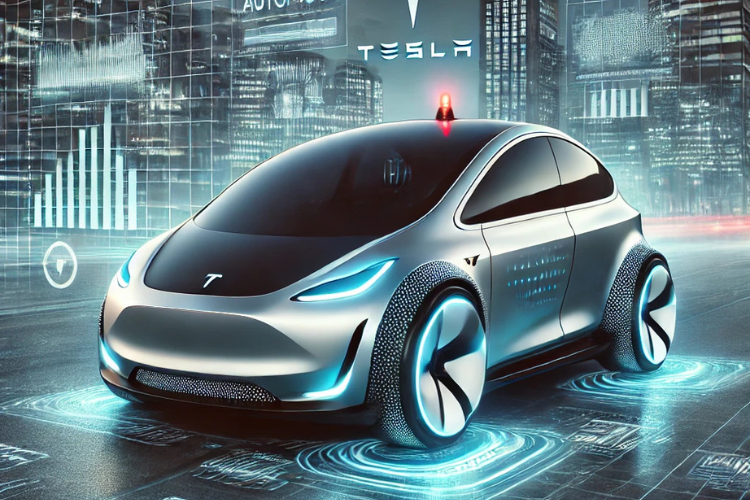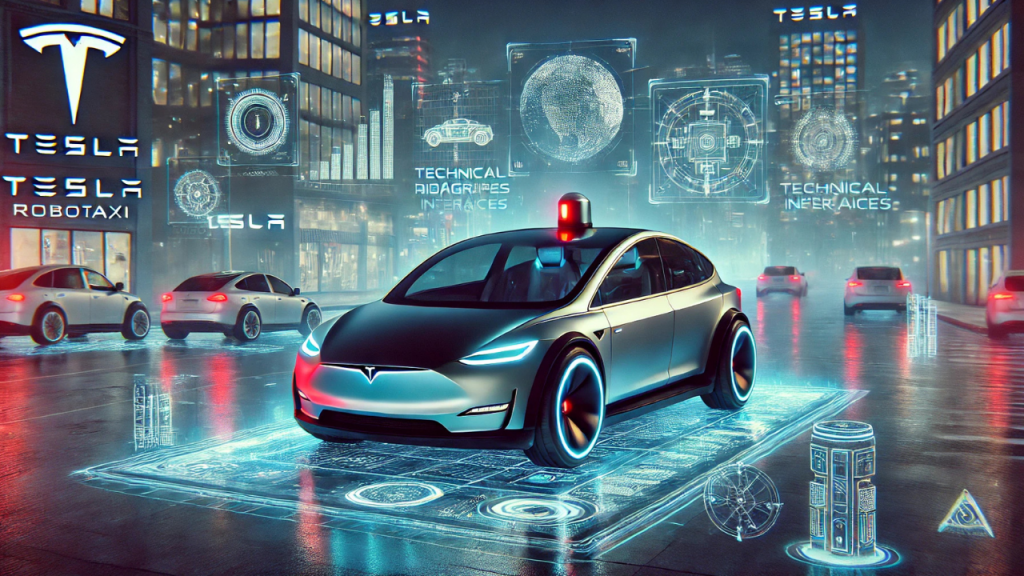Introduction
Tesla is back in the spotlight with its latest technological innovations, and this time, it’s all about the future of transportation. The headlines are buzzing with news of AI advancements and autonomous driving, but there’s a lot more going on beneath the surface. In this blog, we’ll dive into Tesla’s robotaxi secrets—technical details that most people missed. These hidden gems could not only change the auto industry but also reshape how we think about robotics and transportation. Let’s uncover these secrets.
Teleoperated Robots: The Silent Revolution
While everyone’s waiting for Tesla to unveil fully autonomous robotaxis, the company is quietly making headway with teleoperated robots. These robots aren’t entirely AI-driven yet, but they’re close. Instead of waiting for AI to be perfected, Tesla has introduced teleoperation—allowing humans to remotely control robots. This provides immediate real-world utility.
The brilliance of this strategy is that it serves two purposes. First, it offers a functional product right now. Second, it allows Tesla to collect data in real-time, which helps accelerate the development of full autonomy. Imagine a system where one person can control multiple robots simultaneously. This setup enhances productivity and makes Tesla’s robots immediately useful in industries like manufacturing and transportation.
Tesla Robo Taxi: More Than Just a Driverless Car
Much of the buzz around Tesla’s robotaxi focuses on the fact that it has no steering wheel or pedals. But what most people missed is Tesla’s built-in flexibility. The design is modular, meaning that if regulatory challenges arise, Tesla could easily add steering wheels and pedals, turning the robotaxi into a consumer car.
This flexibility is crucial. It gives Tesla a safety net in case full autonomy takes longer than expected. Tesla’s approach is more than just a futuristic concept—it’s a strategic move that ensures the vehicle can be adapted to various markets. With this dual-purpose design, Tesla could roll out what might become the world’s most affordable and stylish compact car, and it wouldn’t even be a stretch.
The Versatile Tesla Van: A Swiss Army Knife on Wheels
While the robotaxi has taken the spotlight, Tesla’s new van is a hidden gem that deserves more attention. On the surface, it looks like a sleek cargo van, but it’s much more than that. The Tesla van is modular, which means it can be retrofitted for various uses. Whether you want an RV, a mobile office, or even a party bus, this van can do it all.
Tesla has essentially created a platform, not just a product. Think of the possibilities: fleets of these vans could be running deliveries, serving as mobile offices, or even being customized for personal use. This level of versatility is going to disrupt multiple industries at once. Whether it’s businesses or individuals, everyone stands to benefit from this level of adaptability in transportation.
Teleoperation: Tesla’s Stealth Plan for Immediate Utility
Full AI autonomy may be the ultimate goal, but teleoperation is Tesla’s secret weapon for immediate impact. By allowing human operators to control robots remotely, Tesla has found a way to make its technology useful today, not years from now. This is a genius move because it provides real-world utility while full AI continues to be developed.
Tesla has already begun testing teleoperation, where one operator can control several robots at once. This scalability means Tesla can roll out their robots across various industries, providing an immediate solution for tasks that are too complex for AI alone but can be managed with human oversight. As Tesla continues to test and refine teleoperation, they’re gathering critical data that will further push the boundaries of AI-driven robotics.
Hidden Manufacturing Secrets: Efficiency at Its Finest
Tesla’s robotaxi design isn’t just sleek; it’s a masterclass in manufacturing efficiency. Tesla has optimized its casting process to reduce production costs dramatically. The company has eliminated unnecessary complexity in the body panels, using a streamlined design with fewer parts. This allows Tesla to scale up production quickly while keeping costs low.
What does this mean for consumers? More affordable vehicles, faster production times, and a company that’s ready to meet growing demand. Tesla’s focus on simplifying production is not only a smart move but one that will have ripple effects across the automotive industry. This approach allows Tesla to remain competitive while scaling its operations faster than its competitors.
Cost-Efficiency Meets Scalability
Tesla is famous for over-engineering its vehicles to achieve maximum performance, but this time, they’ve taken a different approach. The new robotaxi has been designed with cost efficiency in mind. By stripping away unnecessary features, Tesla has created a vehicle that is both affordable and scalable.

This is a key part of Tesla’s strategy for its robotaxi fleet. To scale globally, the company needs to keep production costs low without sacrificing quality. Tesla’s ability to do more with less will shake up the auto industry, especially as they push to dominate the market with a fleet of low-cost, highly efficient robotaxis. The future isn’t just autonomous; it’s scalable and affordable.
Tesla’s Strategy with Regulations: Always One Step Ahead
Autonomous driving technology is advancing, but regulatory approval is still a hurdle. Tesla is smartly navigating this by designing vehicles that can function with or without full autonomy. This gives them the flexibility to launch in markets that may not yet be ready for fully autonomous cars.
By hedging their bets, Tesla ensures they’re ready for whatever the future holds. If regulators take longer to approve driverless cars, Tesla can still hit the road with their semi-autonomous vehicles, complete with steering wheels and pedals if necessary. This forward-thinking strategy allows Tesla to minimize risk and maximize opportunity.
The Data Collection Genius: A Feedback Loop of Progress
Tesla’s teleoperated robots and robotaxis aren’t just about mobility; they’re massive data collection machines. Every mile driven and every task performed is recorded and fed back to Tesla’s AI teams for improvement. This is where Tesla’s advantage lies—they don’t wait for technology to be perfect. Instead, they launch early, gather data, and refine in real time.
This constant feedback loop accelerates the development of full autonomy. The more data Tesla collects, the faster they can push towards a future where robots and autonomous vehicles operate without human intervention. Tesla’s commitment to learning from real-world applications sets them apart from competitors who rely solely on lab testing.
The Robo Taxi Compact Car Theory
Tesla’s robotaxi is not just a taxi—it’s potentially the company’s stealthiest compact car reveal. With just a few tweaks, like adding steering wheels and pedals, this vehicle could become Tesla’s bestselling compact consumer car. Most people missed this, but the strategy is clear: Tesla is preparing for multiple market opportunities with a single design.

This flexibility allows Tesla to dominate both the autonomous taxi market and the consumer car market. It’s a two-in-one strategy that’s poised to disrupt traditional automakers who don’t have this level of versatility in their vehicles.
Fleet Management Outsourcing: Tesla’s Next Big Move
Tesla’s versatile van isn’t just a consumer product; it’s a fleet manager’s dream. Tesla plans to offer customizable fleet solutions, from mobile offices to delivery vans. This opens up a whole new market for Tesla, as businesses can purchase vans tailored to their specific needs.
Whether it’s running a delivery service or managing a fleet of mobile offices, Tesla’s platform will allow companies to operate more efficiently. This strategy is going to disrupt multiple industries, as Tesla moves beyond selling vehicles to offering full-scale fleet solutions.
Conclusion
Tesla is far ahead of its competitors, not just in terms of autonomous driving but in creating flexible, scalable, and cost-effective transportation solutions. By focusing on teleoperation, modular design, and manufacturing efficiency, Tesla has positioned itself to dominate both the consumer and commercial markets. What do you think of Tesla’s strategy? Join the conversation in the comments, and don’t forget to subscribe to StartupHakk for more insights on cutting-edge technology.




